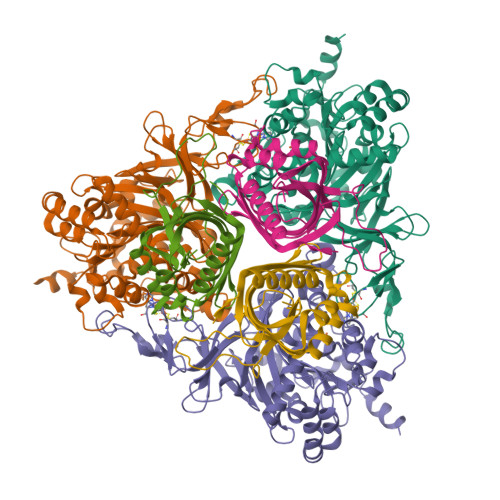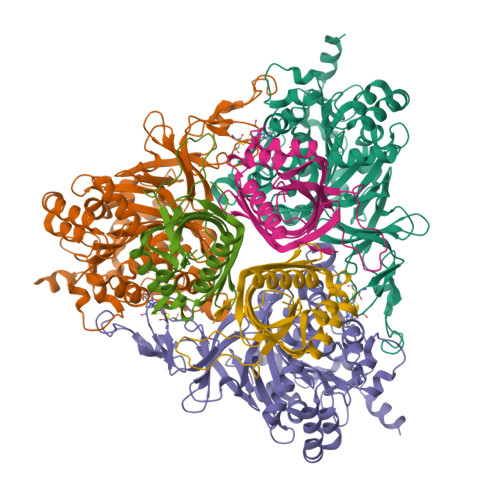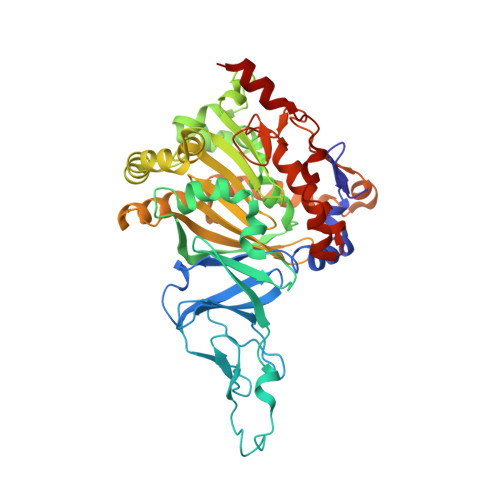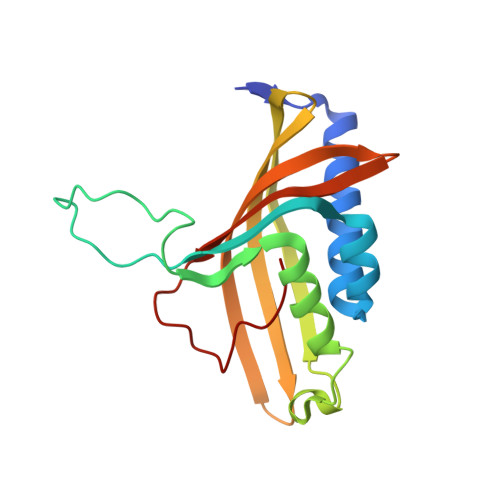Structural investigations of the ferredoxin and terminal oxygenase components of the biphenyl 2,3-dioxygenase from Sphingobium yanoikuyae B1.
Ferraro, D.J., Brown, E.N., Yu, C.L., Parales, R.E., Gibson, D.T., Ramaswamy, S.(2007) BMC Struct Biol 7: 10-10
- PubMed: 17349044
- DOI: https://doi.org/10.1186/1472-6807-7-10
- Primary Citation of Related Structures:
2GBW, 2GBX, 2I7F - PubMed Abstract:
The initial step involved in oxidative hydroxylation of monoaromatic and polyaromatic compounds by the microorganism Sphingobium yanoikuyae strain B1 (B1), previously known as Sphingomonas yanoikuyae strain B1 and Beijerinckia sp. strain B1, is performed by a set of multiple terminal Rieske non-heme iron oxygenases. These enzymes share a single electron donor system consisting of a reductase and a ferredoxin (BPDO-FB1). One of the terminal Rieske oxygenases, biphenyl 2,3-dioxygenase (BPDO-OB1), is responsible for B1's ability to dihydroxylate large aromatic compounds, such as chrysene and benzo[a]pyrene. In this study, crystal structures of BPDO-OB1 in both native and biphenyl bound forms are described. Sequence and structural comparisons to other Rieske oxygenases show this enzyme to be most similar, with 43.5 % sequence identity, to naphthalene dioxygenase from Pseudomonas sp. strain NCIB 9816-4. While structurally similar to naphthalene 1,2-dioxygenase, the active site entrance is significantly larger than the entrance for naphthalene 1,2-dioxygenase. Differences in active site residues also allow the binding of large aromatic substrates. There are no major structural changes observed upon binding of the substrate. BPDO-FB1 has large sequence identity to other bacterial Rieske ferredoxins whose structures are known and demonstrates a high structural homology; however, differences in side chain composition and conformation around the Rieske cluster binding site are noted. This is the first structure of a Rieske oxygenase that oxidizes substrates with five aromatic rings to be reported. This ability to catalyze the oxidation of larger substrates is a result of both a larger entrance to the active site as well as the ability of the active site to accommodate larger substrates. While the biphenyl ferredoxin is structurally similar to other Rieske ferredoxins, there are distinct changes in the amino acids near the iron-sulfur cluster. Because this ferredoxin is used by multiple oxygenases present in the B1 organism, this ferredoxin-oxygenase system provides the structural platform to dissect the balance between promiscuity and selectivity in protein-protein electron transport systems.
Organizational Affiliation:
Department of Biochemistry, University of Iowa Roy J. and Lucille A. Carver College of Medicine, Iowa City, Iowa, 52242, USA. daniel-ferraro@uiowa.edu




















